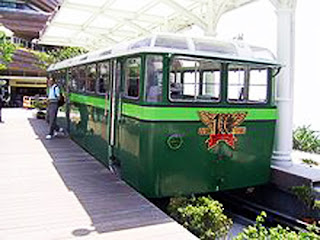Posted by gmygotravel
Hong Kong International Airport (IATA: HKG, ICAO: VHHH) is the main airport in Hong Kong. It is colloquially known as Chek Lap Kok Airport (赤鱲角機場), because it was built on the island of Chek Lap Kok by land reclamation, and also to distinguish it from its predecessor, the closed Kai Tak Airport.
The airport opened for commercial operations in 1998, replacing Kai Tak, and is an important regional trans-shipment centre, passenger hub and gateway for destinations in Mainland China (with over 40 destinations) and the rest of Asia. Despite a relatively short history, Hong Kong International Airport has won seven Skytrax World Airport Awards for customer satisfaction in just ten years.
However, HKIA ranked second and third in 2009 and 2010 respectively for the Skytrax World Airport Awards, although it still remains as the best airport taking into account passenger numbers annually.
HKIA also operates one of the world's largest passenger terminal buildings (the world's largest when opened in 1998) and operates twenty-four hours a day. The airport is operated by the Airport Authority Hong Kong and is the primary hub for Cathay Pacific Airways, Dragonair, Hong Kong Express Airways, Hong Kong Airlines and Air Hong Kong (cargo). It is a focus city for Vietnam Airlines, Garuda Indonesia, China Airlines and Air New Zealand to a lesser extent Qantas and Virgin Atlantic, both of which use Hong Kong as a stopover point for flights on the Kangaroo Route between Australasia and Europe.
Both United Airlines and Air India use Hong Kong as a stopover point for flights respectively from the United States to Singapore and Ho Chi Minh City as well as from India to Osaka and Seoul. In the near future, Garuda Indonesia is considering making Hong Kong their transit hub for flights to Europe while Swiss International Air Lines considers Hong Kong to be a major transfer hub for its network.This shows that Hong Kong International Airport is a key Asian airport for global airline operations.
Flights are operated by roughly 90 airlines to over 150 cities across the globe, and in 2009 it was the 13th busiest airport worldwide in terms of passenger throughput, registering 45,560,888.HKIA is also an important contributor to the Hong Kong economy, with 60,000 people employed at the airport.
In 2009, it was the second busiest airport in the world in terms of cargo traffic, handling 3,384,765 tons of cargo.In 2010, HKIA became the busiest airport by cargo traffic in the world, ahead of Memphis Airport in USA, along with Hong Kong flag carrier Cathay Pacific holding the title of the world's largest international cargo airline.












